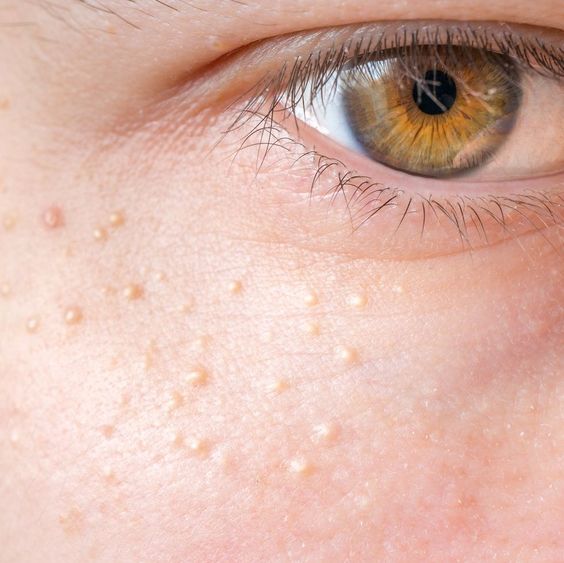Milia are small, white cysts that typically appear on the face, especially around the eyes and cheeks. Unlike acne, milia are not caused by clogged pores; instead, they form when keratin, a protein found in the skin, gets trapped beneath the surface. While milia are harmless, many people seek ways to remove or reduce them for aesthetic reasons. Fortunately, there are effective Milia Treatments in Dubai available that can help you achieve smoother, clearer skin. This article will explore various treatments and techniques to address milia effectively.
Understanding Milia: Causes and Types
Before diving into treatment options, it's essential to understand what causes milia. They can appear in individuals of all ages, but are especially common in newborns, who often develop milia that usually resolve on their own within a few weeks. In adults, milia can be caused by several factors, including:
- Sun Damage: Overexposure to the sun can lead to skin changes that promote the formation of milia.
- Skin Care Products: Heavy creams or products containing petroleum may block pores and contribute to milia formation.
- Skin Conditions: Certain conditions like blistering diseases, or the use of thick ointments, can cause milia to develop.
Understanding these causes can help in selecting the right milia treatments to prevent their recurrence.
Top Milia Treatments That Work Wonders
1. Exfoliation
Regular exfoliation is crucial in maintaining smooth skin and preventing the buildup of dead skin cells that can lead to milia. Using gentle exfoliating scrubs or chemical exfoliants like alpha-hydroxy acids (AHAs) or beta-hydroxy acids (BHAs) can help slough off dead skin layers.
For sensitive skin, opt for mild exfoliants that won't cause irritation. Incorporating exfoliation into your skincare routine can lead to noticeable improvements and a reduced likelihood of milia reappearing.
2. Professional Extraction
One of the most effective milia treatments is professional extraction performed by a dermatologist or licensed skincare professional. During this procedure, a sterile needle or lancet is used to open the milia, allowing for the safe removal of the keratin-filled cyst.
While it may sound daunting, professional extraction is typically quick and causes minimal discomfort. This method is particularly useful for larger or stubborn milia that do not respond to other treatments.
3. Topical Retinoids
Topical retinoids, derived from vitamin A, are highly effective in promoting skin cell turnover and preventing the formation of new milia. These medications help exfoliate the skin's surface and encourage the shedding of dead skin cells.
Retinoids can be found in prescription forms or over-the-counter products. While they can be potent, start with lower concentrations to assess your skin’s tolerance and avoid irritation. Consistent use of retinoids can lead to smoother skin and a significant reduction in milia.
4. Chemical Peels
Chemical peels are a popular cosmetic treatment for various skin concerns, including milia. During a chemical peel, a solution is applied to the skin to exfoliate the outer layer, promoting the growth of new, healthy skin.
Depending on your skin type and severity of milia, dermatologists may recommend superficial peels with AHAs or deeper peels with trichloroacetic acid (TCA). Regular chemical peels can help reduce milia and improve overall skin texture, leaving you with a brighter complexion.
5. Laser Treatments
For those seeking more advanced milia treatments, laser therapy can be an effective option. Lasers work by targeting the outer layer of the skin to vaporize milia and promote collagen production.
Laser treatments are particularly beneficial for individuals with multiple milia or those who wish to address skin texture issues simultaneously. While it may require several sessions for optimal results, many patients find laser treatments to be effective and long-lasting.
Home Remedies for Milia
While professional treatments are often the most effective, some people prefer to start with home remedies. Here are a few options:
1. Steam
Steaming your face can help open up pores and facilitate the removal of dead skin cells. After steaming, gently exfoliate your skin to encourage cell turnover. However, do not pick at or attempt to extract milia yourself, as this can lead to scarring or infection.
2. Honey and Sugar Scrub
A homemade scrub made of honey and sugar can provide gentle exfoliation. Honey has antibacterial properties, while sugar acts as a natural exfoliant. Mix equal parts of both ingredients, apply to your face, and massage gently before rinsing off.
3. Aloe Vera
Aloe vera is known for its soothing and healing properties. Applying fresh aloe vera gel to the affected areas can help hydrate the skin and promote healing.
4. Avoid Heavy Products
To prevent the formation of new milia, avoid using thick creams or heavy cosmetics that can clog pores. Opt for lightweight, non-comedogenic products that won’t exacerbate the issue.
Prevention Tips
Preventing milia from forming in the first place is crucial for maintaining clear skin. Here are some tips to help you avoid their recurrence:
- Stay Hydrated: Drink plenty of water to keep your skin hydrated and healthy.
- Use Sunscreen: Protect your skin from sun damage by using broad-spectrum sunscreen daily.
- Choose the Right Products: Opt for skincare products labeled as non-comedogenic and suitable for your skin type.
Conclusion
Milia can be a cosmetic concern for many, but with the right milia treatments, achieving clear and smooth skin is possible. From professional extractions to at-home remedies, there are various options available to help you manage and prevent milia effectively. Incorporating a consistent skincare routine and consulting with a dermatologist can ensure you find the best approach tailored to your skin's needs. With patience and persistence, you can successfully reduce the appearance of milia and enhance your overall skin health.





Comments